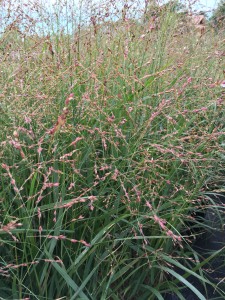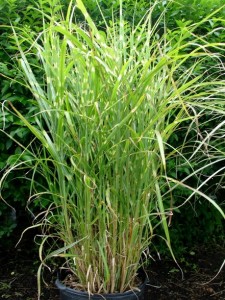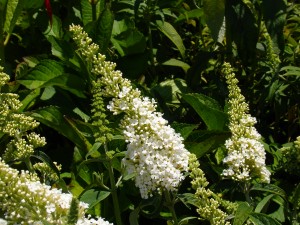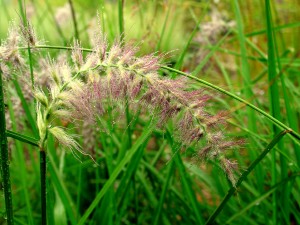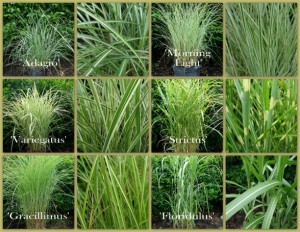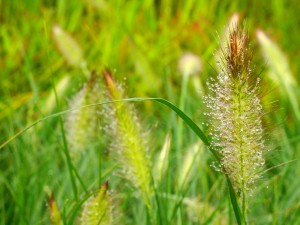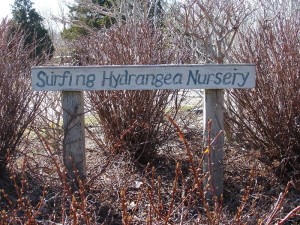Ornamental grasses are beautiful, deer-resistant and easy to grow. Although there are many lovely native grasses, the majority of ornamental varieties are introduced from Asia. We sell hundreds upon hundreds of these plants each year and their popularity seems to keep growing.
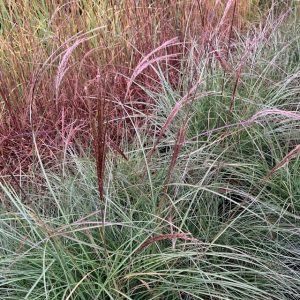 Most ornamental grasses are clumping, perennial, warm-season grasses that will come back for years. Although there are many species and varieties available, the most popular today are Maiden Grasses, Miscanthus sinensis and Fountain Grasses, Pennisetum alopecuroides. If sited in full sun and grown on average soil, these plants require little care – just cut them back to a few inches above the ground during the winter and irrigate during dry spells in the summer. Maiden grass do best if dug and divided every 5 years or so, which is a major undertaking! Make sure to keep this extra step in mind when planting them, as the clumps can get very large as they age.
Most ornamental grasses are clumping, perennial, warm-season grasses that will come back for years. Although there are many species and varieties available, the most popular today are Maiden Grasses, Miscanthus sinensis and Fountain Grasses, Pennisetum alopecuroides. If sited in full sun and grown on average soil, these plants require little care – just cut them back to a few inches above the ground during the winter and irrigate during dry spells in the summer. Maiden grass do best if dug and divided every 5 years or so, which is a major undertaking! Make sure to keep this extra step in mind when planting them, as the clumps can get very large as they age.
The most popular grasses are listed below:
Miscanthus sinensis ‘Gracillimus’: Gracillimus Maiden Grass. The most common large ornamental grass sold. Broad, vase shaped form, reaching 6′ tall. Deep-green, finely textured blades have a narrow white mid-rib. Silver/buff-colored flowers appear above the foliage in late summer and persist into the winter. After a number of years, the clumps will spread to 3+ feet wide, with the foliage spreading out to at least 5 feet. The dense crown of the plant may die out in the center, signaling that it’s time to divide. Division is best done in late spring, just as new growth has begun to emerge.
Miscanthus sinensis ‘Adagio’: Adagio Maiden Grass. Another large grass, similar to ‘Gracillimus’, but a foot or two smaller in size overall.
Pennisetum alopecuroides ‘Hameln’: Dwarf Fountain Grass. Rounded grass with a cascading habit, 2 – 2.5′ tall and wide. Mid-green foliage changes to yellow in fall. Fluffy, bottle brush-shaped flowers appear in mid August above the foliage on narrow stems.
Panicum virgatum, cvs.: Switch Grass. Many varieties of this native grass are now in commerce. Generally, upright 3-5′ tall. Airy inflorescences appear in mid-summer. Breeding in these grasses has focused on improved form and foliage color. ‘Heavy Metal’, an old favorite, has a metallic blue sheen to the leaves and average height of 5′. For a more compact variety, try ‘Cape Breeze’ a dwarf that stays about 2.5′ tall. Many other cultivars are available with purple or blue foliage, some reaching 8′, making a major statement. For more information on switch grass check out: https://surfinghydrangea.com/switch-grass-2086
Nassella tenuissima aka Stipa tenuissima: Mexican Feather Grass. One of the few cool-season ornamental grasses, this plant has gained in popularity in recent years, especially used as a mass planting. The light green, fine-textured foliage emerges in late spring. This fresh growth appears upright early in the growing season, but becomes more arching as it elongates to 1-2′ in height, with a more fountain-like habit. In mid-summer the airy inflorescences emerge and the foliage changes to a beachy, buff-tan.
These are only a handful of the grasses that we stock. On any given day, we will have many more to choose from. We’d be happy to show them to you.

